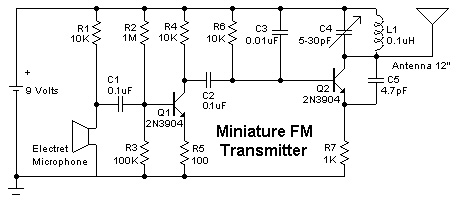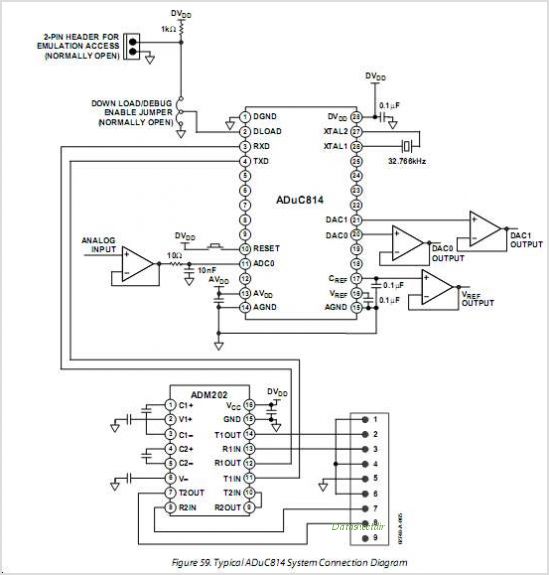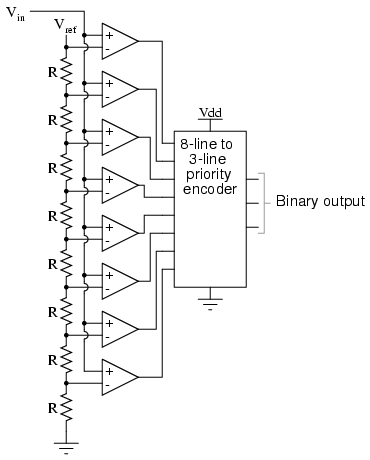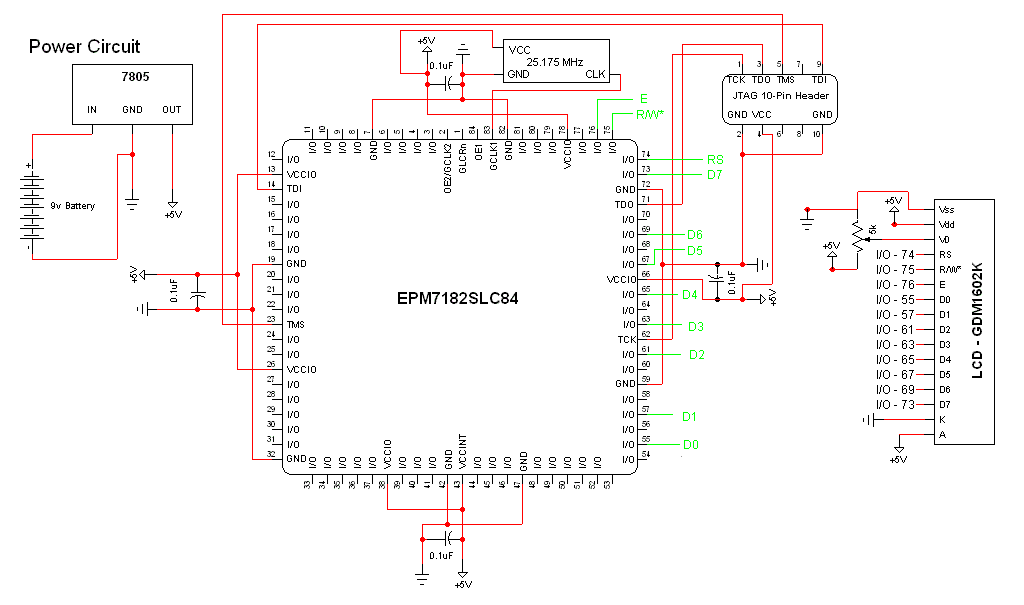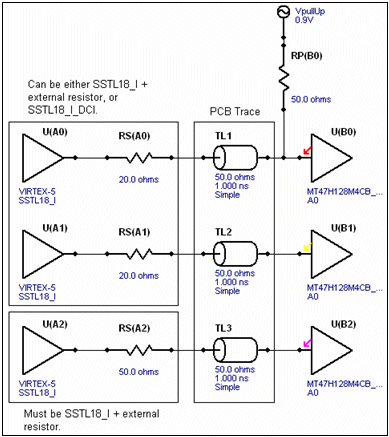
ADC In An FPGA
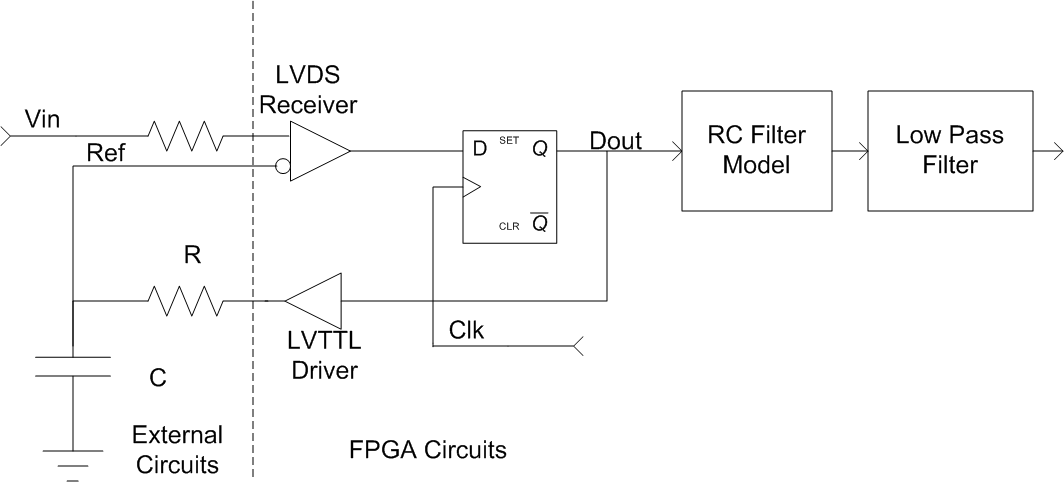
This content is highly technical and involves Analog-to-Digital Converters (ADCs), Field Programmable Gate Arrays (FPGAs), and advanced electrical design. If this topic does not resonate with you, it is advisable to skip the remainder of this blog post. An update: Part 2 of this series is available. It can be accessed after completing Part 1.
The circuit design focuses on integrating Analog-to-Digital Converters (ADCs) with Field Programmable Gate Arrays (FPGAs) to create a sophisticated electrical system capable of processing analog signals with high precision. The ADC serves as the interface that converts continuous analog signals into discrete digital values, which can then be manipulated by the FPGA.
In this schematic, the ADC is connected to the FPGA via a high-speed serial interface, ensuring rapid data transfer. The choice of ADC is critical; it must have a suitable sampling rate and resolution to meet the application requirements. For instance, a 12-bit ADC with a sampling rate of 1 MSPS (Million Samples Per Second) would be appropriate for many applications requiring moderate precision and speed.
The FPGA, programmed with a specific logic design, processes the digital signals received from the ADC. The FPGA may include various digital signal processing (DSP) blocks that can filter, amplify, or otherwise modify the input signals based on the desired functionality. The flexibility of FPGAs allows for reconfiguration, enabling the design to adapt to different signal processing tasks without the need for hardware changes.
Power supply circuits are also a crucial aspect of the design, ensuring that both the ADC and FPGA receive stable voltage levels. Decoupling capacitors should be placed close to the power pins of the components to minimize noise and provide a clean power source. Additionally, a proper grounding scheme must be implemented to reduce interference and improve overall system performance.
In summary, the integration of ADCs and FPGAs in this electrical design provides a powerful solution for real-time signal processing applications. The ability to customize the FPGA logic and the precision of the ADC make this combination suitable for a wide range of technical applications, from telecommunications to industrial automation.Geek Alert! What follows is very technical. It involves ADC`s, FPGA`s, and sophisticated electrical design. If this doesn`t sound like you then you can safely skip the rest of this blog post. EDIT: Part 2 of this series is up. Read it here, when you`re done with Part 1, of course. I`ve always had this. 🔗 External reference
The circuit design focuses on integrating Analog-to-Digital Converters (ADCs) with Field Programmable Gate Arrays (FPGAs) to create a sophisticated electrical system capable of processing analog signals with high precision. The ADC serves as the interface that converts continuous analog signals into discrete digital values, which can then be manipulated by the FPGA.
In this schematic, the ADC is connected to the FPGA via a high-speed serial interface, ensuring rapid data transfer. The choice of ADC is critical; it must have a suitable sampling rate and resolution to meet the application requirements. For instance, a 12-bit ADC with a sampling rate of 1 MSPS (Million Samples Per Second) would be appropriate for many applications requiring moderate precision and speed.
The FPGA, programmed with a specific logic design, processes the digital signals received from the ADC. The FPGA may include various digital signal processing (DSP) blocks that can filter, amplify, or otherwise modify the input signals based on the desired functionality. The flexibility of FPGAs allows for reconfiguration, enabling the design to adapt to different signal processing tasks without the need for hardware changes.
Power supply circuits are also a crucial aspect of the design, ensuring that both the ADC and FPGA receive stable voltage levels. Decoupling capacitors should be placed close to the power pins of the components to minimize noise and provide a clean power source. Additionally, a proper grounding scheme must be implemented to reduce interference and improve overall system performance.
In summary, the integration of ADCs and FPGAs in this electrical design provides a powerful solution for real-time signal processing applications. The ability to customize the FPGA logic and the precision of the ADC make this combination suitable for a wide range of technical applications, from telecommunications to industrial automation.Geek Alert! What follows is very technical. It involves ADC`s, FPGA`s, and sophisticated electrical design. If this doesn`t sound like you then you can safely skip the rest of this blog post. EDIT: Part 2 of this series is up. Read it here, when you`re done with Part 1, of course. I`ve always had this. 🔗 External reference

